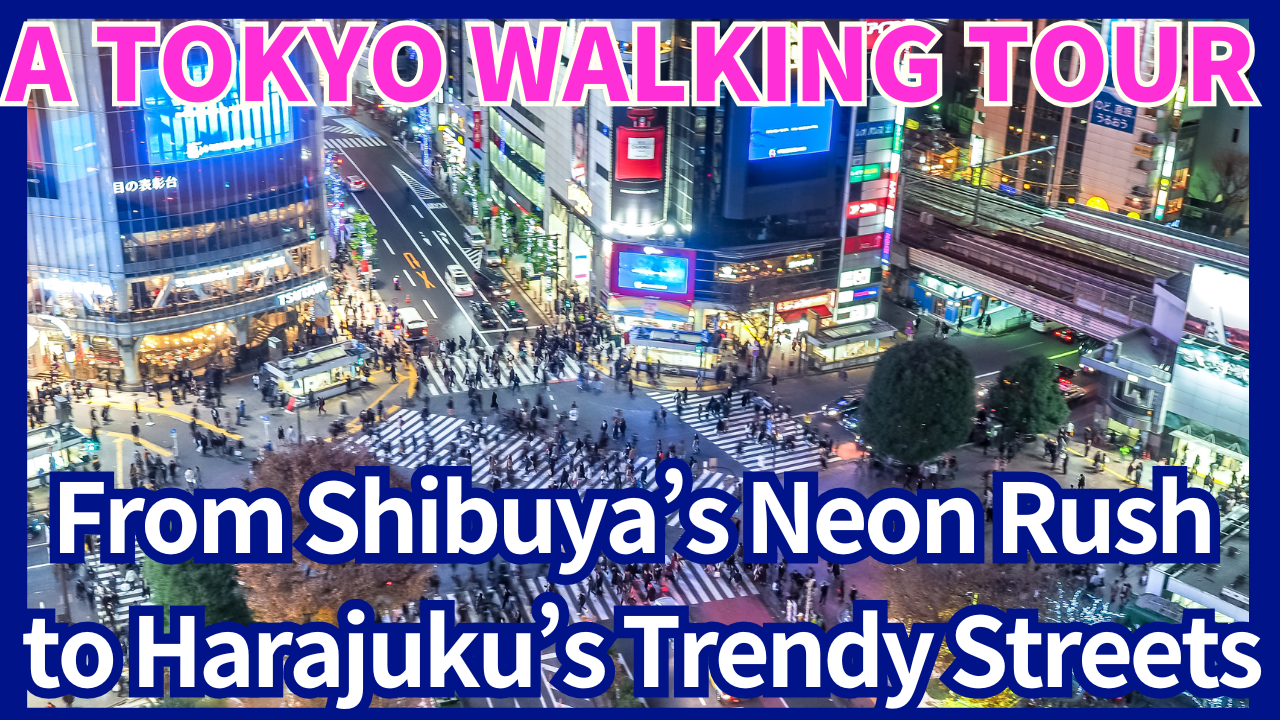- Diving into Shibuya’s Iconic Scramble
- Meeting Hachiko, the Loyal Dog
- Tasting Japan at Shibuya Yokocho
- Ascending to Miyashita Park’s Rooftop
- Discovering the Former Shibuya River Promenade
- Stepping into Harajuku’s Tokyu Plaza
- Diving into Takeshita Street’s Youthful Buzz
- Finding Balance in Nearby Side Streets
- Wrapping Up the Tokyo Walk
- Final Thoughts and Next Adventures
Diving into Shibuya’s Iconic Scramble
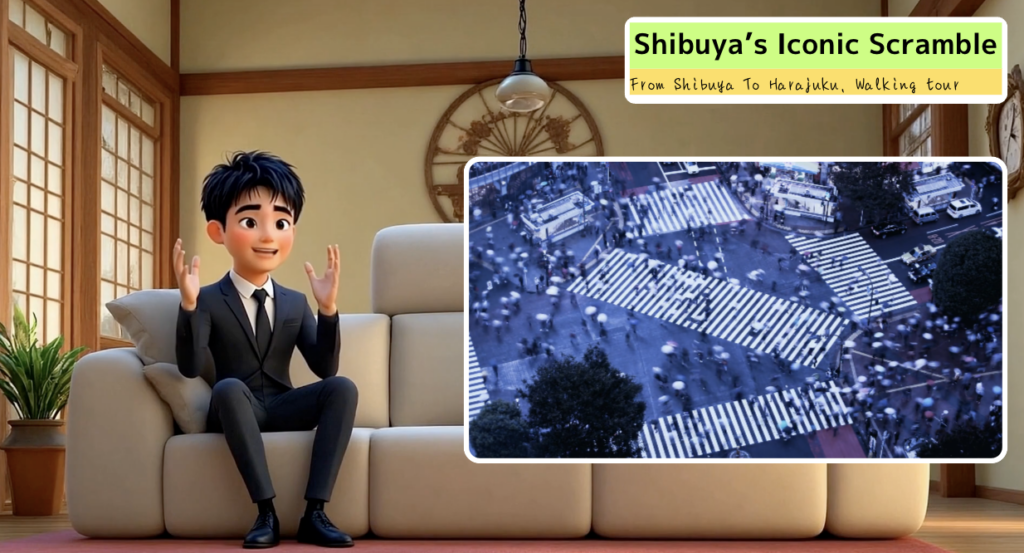
Welcome to Tokyo! Today, we’re embarking on a walking tour that kicks off with one of the city’s most famous sights: Shibuya Crossing.
This intersection is legendary for its floods of pedestrians crossing all at once from every direction.
Look around at the towering screens, neon signs, and bold billboards competing for your attention.
There’s a certain rhythm to the chaos as locals and tourists alike charge forward at the change of the traffic light, creating a memorable visual spectacle.
If you want a better vantage point, head to one of the nearby second-floor cafes where you can watch waves of people come together and then disperse, all set against a colorful urban backdrop.
Whether you’re standing in the thick of the crossing or capturing it from above, this spot is the embodiment of Tokyo’s fast-paced energy.
Meeting Hachiko, the Loyal Dog
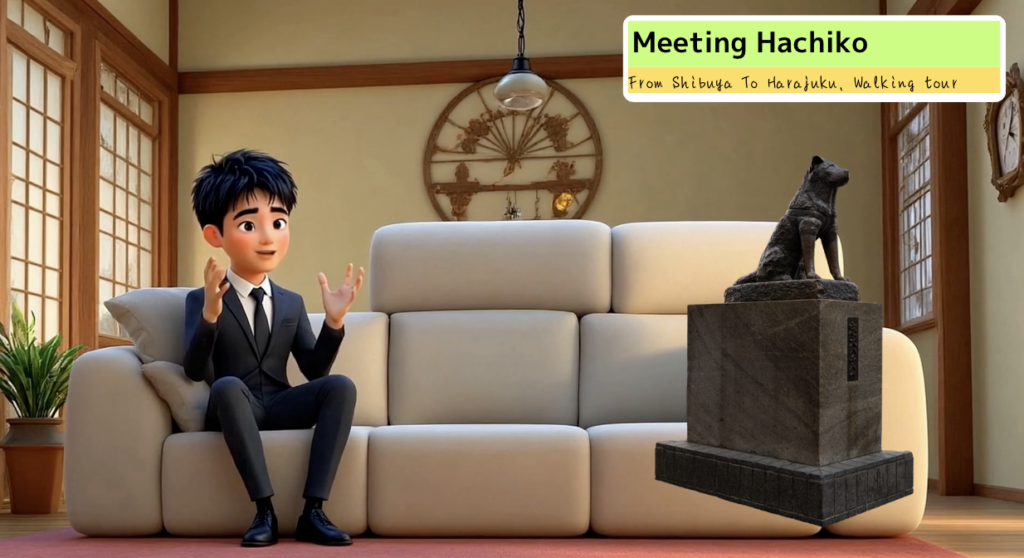
Just a short walk from the crossing is the statue of Hachiko, an Akita dog whose loyalty has become part of Shibuya’s cultural identity.
The story goes that Hachiko continued to wait for his owner at the station each day, long after the owner had passed away.
It’s a simple sculpture that packs a heartfelt punch, reminding everyone that friendship and devotion transcend time.
You’ll likely see a small crowd gathered around, taking photos and selfies. It’s also a common meeting point for locals, who say, “Let’s meet at Hachiko!” before heading off to enjoy everything Shibuya has to offer.
Tasting Japan at Shibuya Yokocho
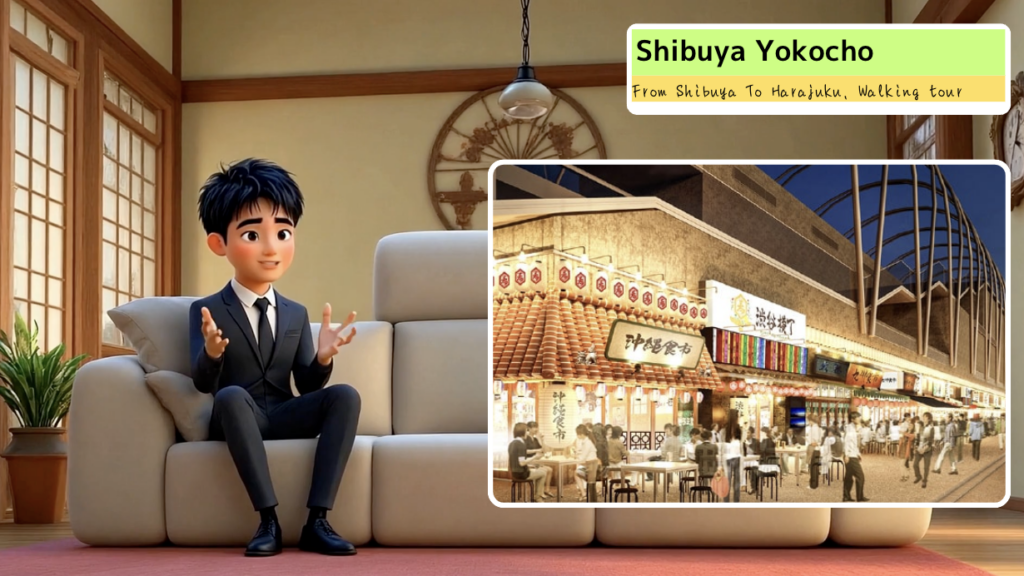
Shibuya isn’t just about crosswalks and big screens.
If you’re hungry, it’s time for a culinary adventure at Shibuya Yokocho, an alley that features a medley of regional Japanese dishes.
You could try piping hot ramen from Hokkaido, savory dumplings from the Kansai region, or maybe juicy skewers inspired by Okinawan flavors.
Each small eatery has its own ambiance, from grill counters where you can watch the chefs cook right in front of you, to cozy tables with decorative lanterns and friendly chatter.
It’s an excellent chance to sample the incredible variety of Japanese cuisine under one roof.
Locals often come here after work to unwind, making it the perfect spot to observe everyday life in Tokyo while indulging in a few small plates.
Ascending to Miyashita Park’s Rooftop
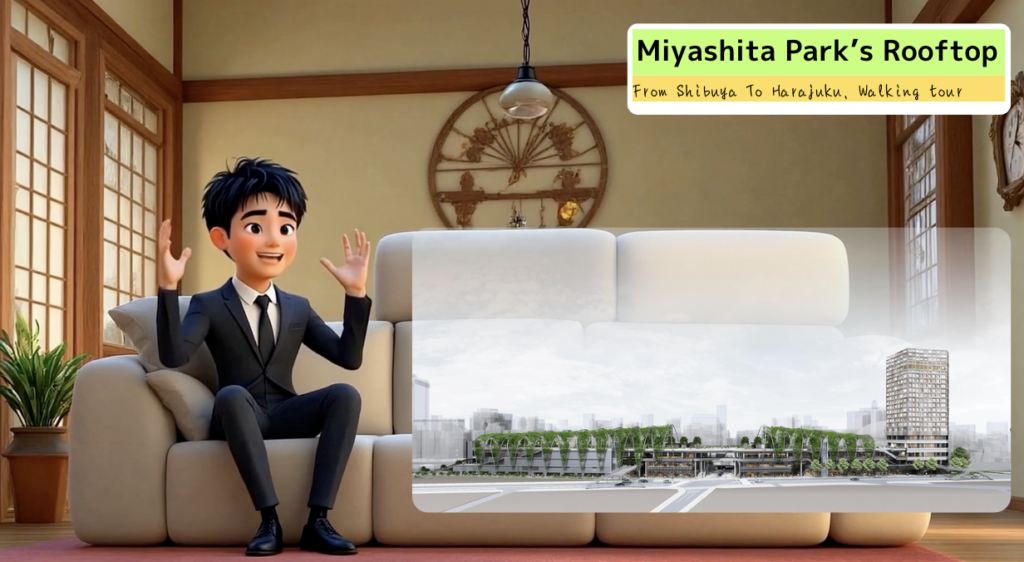
Above Shibuya Yokocho, you’ll discover Miyashita Park, a multi-level marvel that combines shopping, dining, and a rooftop public park.
On the lower floors, you can browse through boutiques, electronics stores, or souvenir shops if you still have room in your luggage.
But the real gem is the top floor, where a long park stretches across the complex. Here, people relax on patches of green, share snacks on benches, or enjoy a bit of skateboarding or rock climbing at the dedicated sports facilities.
It’s a bold example of how Tokyo makes use of vertical space in creative ways, creating pockets of calm and fun in the midst of the city’s buzz.
Grab a coffee from a rooftop kiosk, find a spot to sit, and soak in the unusual contrast of grass and urban skyscrapers that define modern Shibuya.
Discovering the Former Shibuya River Promenade
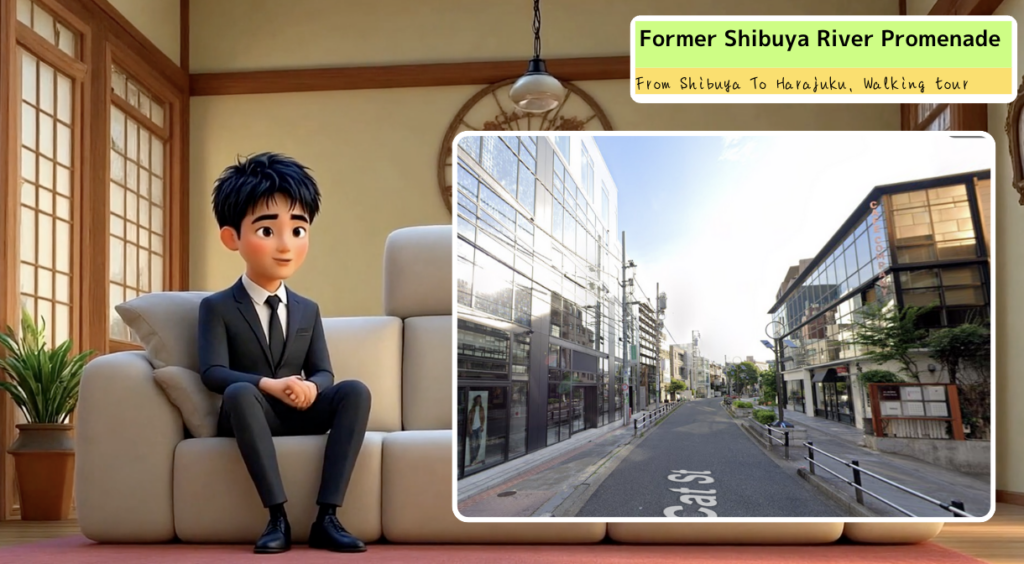
After taking in the sights of Miyashita Park, we’ll journey toward Harajuku by following the former Shibuya River Promenade.
Some people call it Cat Street, although that name can sometimes confuse map apps. In any case, it’s a corridor once occupied by a river, now transformed into a pedestrian-friendly path that’s lined with designer boutiques, quaint coffee shops, and minimalistic storefronts.
This route feels laid-back compared to the frenzy of Shibuya, offering a refreshing window into Tokyo’s more relaxed side.
Feel free to wander into whichever shops catch your eye—many feature limited-edition items that you won’t easily find anywhere else.
If you need a break, stop at a café for a specialty latte or artisanal pastry. You might also catch an art exhibition or popup shop showcasing local creators, illustrating how this street doubles as a cultural hotspot.
Stepping into Harajuku’s Tokyu Plaza
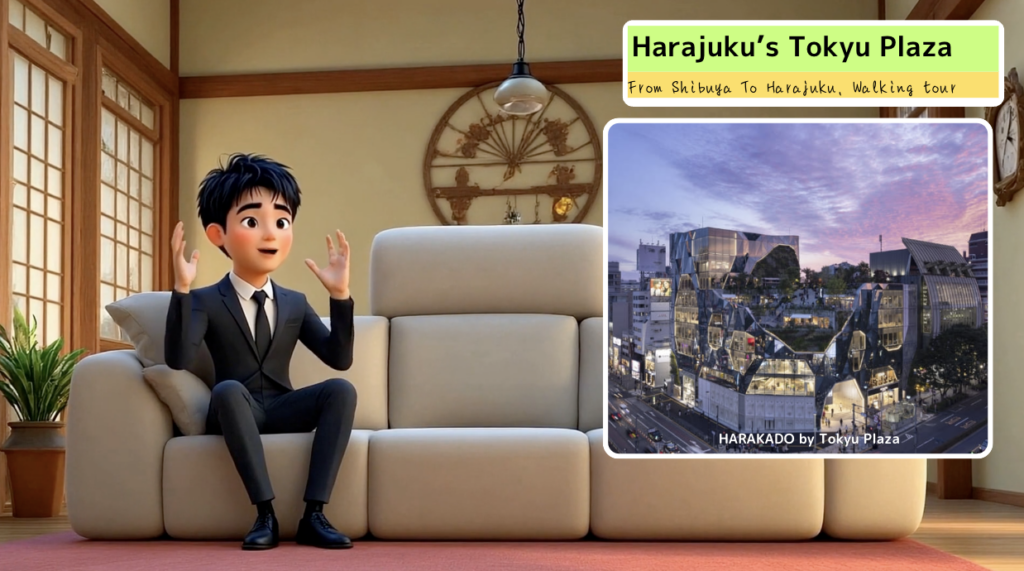
Approaching Harajuku, you’ll notice a striking modern building known as Tokyu Plaza. Inside, you’ll find a mix of international fashion brands, local designers, and creative spaces where Tokyo’s up-and-coming talents sometimes host events or displays.
The architecture itself is part of the attraction, highlighting the city’s flair for blending commercial needs with artistic expression.
Whether you’re here to shop for unique collectibles, sample the latest food trends, or simply admire the futuristic design, Tokyu Plaza is a glimpse into Tokyo’s evolving approach to urban planning.
Swing by an upper-floor terrace if you’d like a small respite from the streets, or explore the interior walkways that often feature fun photo ops and interesting installations.
Diving into Takeshita Street’s Youthful Buzz

Next, we arrive at the epicenter of Harajuku’s youth culture: Takeshita Street. Expect a surge of bright colors, loud music, and constant motion as you navigate through the crowd.
Shops sell everything from playful pop-fashion accessories to graphic tees and whimsical home goods.
Don’t forget to try a classic Harajuku crepe, loaded with fresh fruit, whipped cream, or even ice cream. It’s a sweet pick-me-up that perfectly matches the neighborhood’s lively energy.
If you’re looking for more offbeat souvenirs—think rainbow socks, funky hair accessories, and quirky gadgets—this is the place to find them.
Even if you prefer window shopping, Takeshita Street offers an up-close look at how trends spread through Tokyo’s youth scene, eventually influencing fashion worldwide.
Finding Balance in Nearby Side Streets
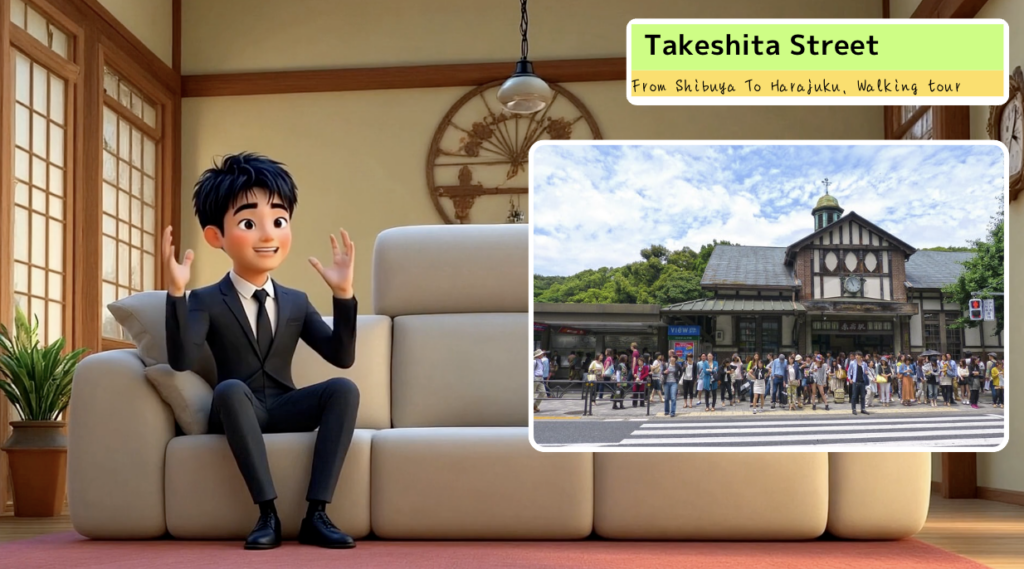
Takeshita Street can be a bit overwhelming, so you’ll be happy to know that smaller alleys spin off in every direction, providing a calmer experience.
Some lead to hidden cafes and stores that cater to specialized interests, from vintage clothing to indie music.
You can often stumble upon a tranquil courtyard or a short lane with far fewer people, a welcome contrast to the packed main strip.
This is your chance to take a breather, reorganize your shopping finds, or just enjoy a quiet moment amid the broader bustle of Harajuku.
Wrapping Up the Tokyo Walk
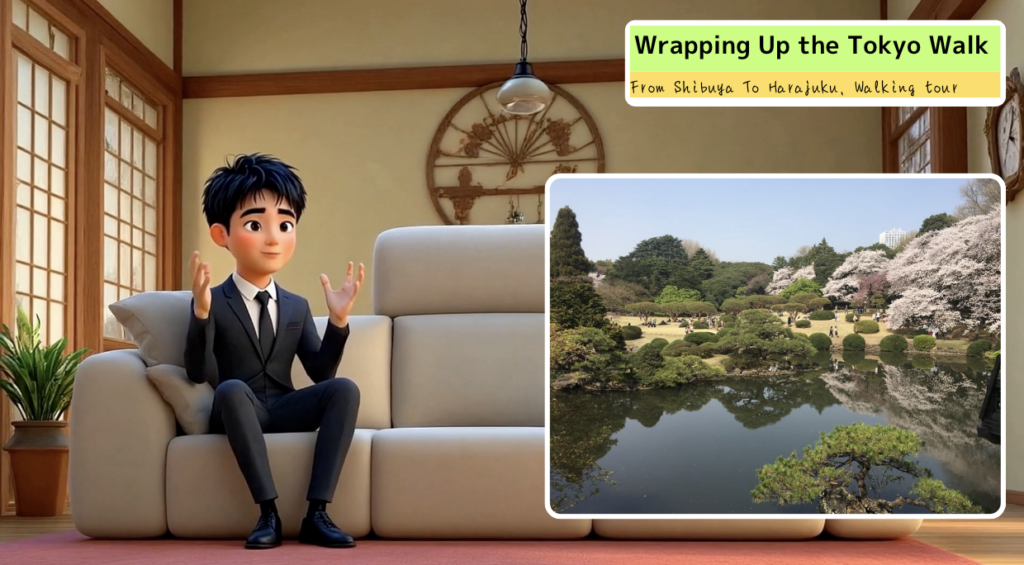
Our journey has spanned the electric energy of Shibuya Crossing, the culinary delights of Shibuya Yokocho, the multi-faceted innovation of Miyashita Park, the creative corridors of the former Shibuya River promenade, and the high-energy fashion realm of Harajuku.
You’ve seen how Tokyo seamlessly fuses old and new, calm and chaos, all within a few walkable blocks. If you have extra time, explore Omotesando Avenue or even head toward Yoyogi Park and Meiji Shrine for a dose of greenery and a look at Japan’s more traditional side.
This route is all about embracing Tokyo’s contrasts, sampling its cuisine, and witnessing how different cultural elements coexist in one vibrant city.
Final Thoughts and Next Adventures

Thank you for joining me on this Tokyo tour!
Whether you’re a foodie, a fashion lover, an architecture enthusiast, or a laid-back explorer, I hope this walk has given you a well-rounded taste of what makes Shibuya and Harajuku such unforgettable places.
Tokyo is endlessly evolving, so don’t be surprised if you come back in a year and find new shops, different trends, and fresh experiences. If you have questions, comments, or personal stories from your own time in Tokyo,
I’d love to hear about them. Until next time, safe travels and keep exploring.
